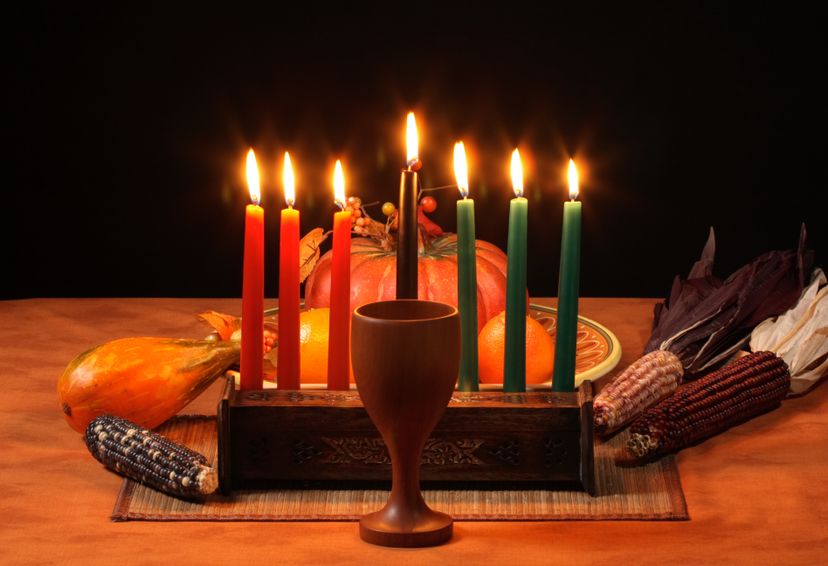The Seven Symbols of Kwanzaa

Seven symbols are displayed during the Kwanzaa ceremony to represent the seven principles of African culture and community.
Mkeka (M-kay-cah) - This is the mat (usually made of straw, but it can also be made of fabric or paper) upon which all the other Kwanzaa symbols are placed. The mat represents the foundation of African traditions and history.
Advertisement
Mazao (Maah-zow) - The crops, fruits and vegetables, represent traditional African harvest celebrations and show respect for the people who labored to grow them.
Kinara (Kee-nah-rah) - The candle holder represents the original stalk from which all African ancestors came. It holds the seven candles.
Mishumaa (Mee-shoo-maah) - In the seven candles, each candle represents one of the seven principles. The candles are red, green, and black -- symbolic of the African people and their struggles.
Muhindi (Moo-heen-dee) - The corn represents African children and the promise of their future. One ear of corn is set out for each child in the family. In a family without children, one ear is set out symbolically to represent the children of the community.
Kikombe cha Umoja (Kee-com-bay chah-oo-moe-jah) - The Unity Cup symbolizes the first principle of Kwanzaa -- the unity of family and of the African people. The cup is used to pour the libation (water, juice or wine) for family and friends.
Zawadi (Sah-wah-dee) - The gifts represent the labors of the parents and the rewards of their children. Gifts are given to educate and enrich the children -- they may include a book, a piece of art or an educational toy. At least one of the gifts is a symbol of African heritage.